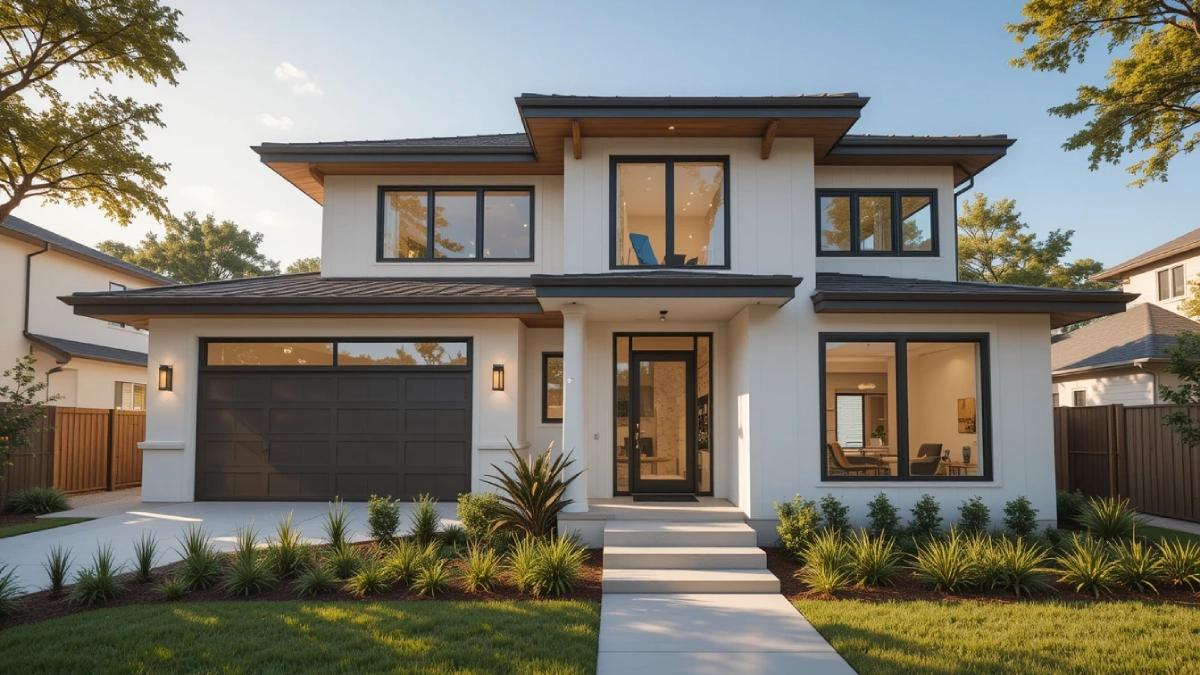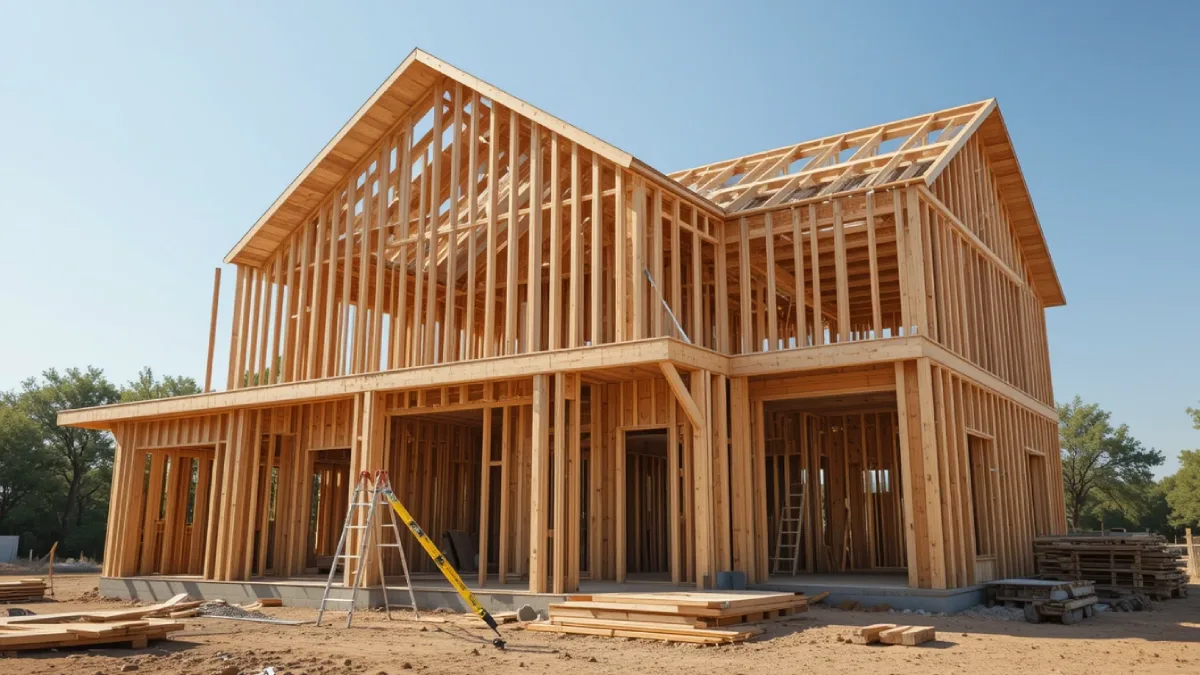Plumbing is one of the most important systems in any home. You need water to cook, clean, and live comfortably. That means your home’s pipes, drains, and fixtures all need to be installed correctly and built to last.
In fast-growing cities like Austin and Round Rock, new homes must meet strict local codes. So, your plumbing system needs to be done correctly from the start. If it isn’t, you could face major headaches, such as leaks, clogs, or city fines.
This guide will walk you through what to expect with new construction plumbing and how to make smart choices along the way.
What Is New Construction Plumbing?
New construction plumbing refers to everything installed before your home is complete. This includes pipes for water, gas, and sewer lines, as well as fixtures such as sinks, showers, and toilets. These systems are added before walls, ceilings, and floors are finished.
The plumber works closely with the builder and other trades, like electricians and HVAC teams. All of these systems need to work together in the same spaces. That means careful planning from day one.
You also need to follow local building codes, which protect your home and health. When new construction plumbing is done right, it helps prevent leaks, poor drainage, and other costly repairs down the road.
What to Expect During the Plumbing Process
Step 1: Planning and Permits
Every plumbing job starts with a plan. Your plumber will review the builder’s blueprints and prepare a full plumbing layout. Then, they’ll apply for permits. These are required in most cities, including Austin and Round Rock.
Permits make sure everything meets safety rules and city codes. This planning phase also allows for key decisions on pipe materials, fixture brands, and future needs, such as adding a water softener or an outdoor sink.
Step 2: Rough-In Plumbing
Next comes rough-in plumbing. This is where most of the pipes are installed. These pipes bring in water and take out waste. During this stage, plumbers install:
- Water supply lines to all bathrooms and the kitchen
- Sewer and drain lines that carry waste away
- Vent pipes to prevent pressure issues
The pipes are placed inside walls, floors, and ceilings. At this point, an inspector will visit the home to check everything before the walls are closed up.
Step 3: Final Plumbing
Once the drywall and painting are complete, the plumber returns to finish the job. This is called the finish-out or trim stage.
During this step, your plumber will:
- Install sinks, faucets, toilets, tubs, and showers
- Hook up dishwashers and washing machines
- Connect water heaters and outdoor spigots
- Turn on the water and test everything for leaks
This is the final step before you move in. If everything passes the inspection, the plumbing is done!
How Plumbing and HVAC Work Together
New homes also include heating, cooling, and ventilation—your HVAC system. HVAC and plumbing often share the same wall and floor spaces, especially in areas like basements, utility rooms, and attics.
In HVAC new construction, air conditioners and furnaces also need drain lines to remove moisture. These lines often connect to your home’s main drain system.
If plumbing and HVAC teams don’t plan together, pipes or ducts can end up in the wrong places. That creates delays, extra costs, or even having to tear out parts of your home to fix mistakes.
That’s why many builders in Round Rock schedule these teams at the same time. Good communication between trades saves money and avoids headaches later.
Signs You Hired a Good Plumbing Contractor
Choosing the right plumber is key to a stress-free build. A great contractor knows how to work fast, follow codes, and solve problems before they grow.
Key Qualities to Look For:
- Licensed and insured in your state
- Experience in new construction plumbing
- Positive reviews from local homeowners
- Ability to work with HVAC and other trades
Smart Questions to Ask:
- How many new homes have you completed?
- Can I see photos or speak to past clients?
- Do you coordinate with HVAC or electrical teams?
- What brands of pipes and fixtures do you prefer?
A skilled plumber should be able to answer, offer examples, and explain their process.
How to Pick the Right Plumbing Partner
A good plumber will make your build easier. Here’s how to find one who fits your needs:
- Ask for referrals: Builders, architects, or real estate agents often know trusted plumbers.
- Search online reviews: Read full reviews, not just star ratings.
- Compare at least three quotes: Don’t just look at price. Review the materials, labor timeline, and warranty.
- Meet in person or over video: A quick chat shows their attitude, knowledge, and communication style.
Hiring the right plumber early saves time, money, and frustration.
Mistakes to Avoid in New Plumbing Projects
New builds move fast, but don’t rush plumbing. That’s how mistakes happen. Here are common issues homeowners run into:
- Choosing the cheapest bid without checking reviews
- Not planning for future upgrades like tankless water heaters
- Forgetting to place the hose bibs outside where needed
- Using low-quality pipes or fixtures to save money
- Not checking that the plumbing fits with the HVAC and electrical plans
These mistakes can be more expensive to fix later. Spending a little more now can save thousands in repairs.
Plumbing Tips for DIY Home Builders
If you’re building your own house, that’s exciting! But when it comes to plumbing, always hire a licensed pro.
Plumbing codes are strict. Mistakes can cause mold, damage, or safety issues. Even if you’re handling framing or painting, let a pro do the pipes.
Still want to stay involved? Here’s how:
- Plan your kitchen and bathroom layout in detail
- Pick out your faucets, sinks, and tubs early
- Mark where you want the outdoor water taps
- Keep an eye on inspections and progress
These small steps help everything go smoothly while your plumber handles the tricky work.
Construction and Plumbing Services You May Need
Depending on your project, your plumber may offer more than just pipes. Here’s a list of common construction and plumbing services:
- Full plumbing layout and design
- Water line and drain pipe installation
- Sewer and vent pipe setup
- Bathtub, shower, and toilet installations
- Outdoor water and hose bib hookups
- Gas line installation for stoves or grills
- HVAC drain tie-ins for air conditioning units
Some companies offer both plumbing and HVAC services. This one-stop shop model can simplify your build and improve coordination.
Conclusion
Your home starts from the ground up—literally. Plumbing is one of the first systems to be installed. Done right, it supports everything from showers to dishwashers.
Choosing a good plumber means fewer problems, better results, and a smoother building experience. With clear planning and expert work, you can avoid leaks, delays, and extra costs.
Take the time to find a professional you trust. Ask questions, check credentials, and make plumbing a top priority in your new build.
Getting ready to build your dream home in Austin, Round Rock, or nearby? Need expert help with plumbing and HVAC new construction?
We’ve got your back. Our licensed team offers full construction and plumbing services designed to make your life easier.
Click below to get your free quote today—and build with total confidence!
FAQs
It usually starts right after the foundation and finishes before move-in.
Yes. Most cities, including Austin, require permits before any pipework begins.
Most plumbing work takes 1–3 weeks, depending on the home’s size.
No. Most states require plumbing to be done by a licensed contractor.
Often, plumbing and HVAC teams work side by side to avoid conflicts.

